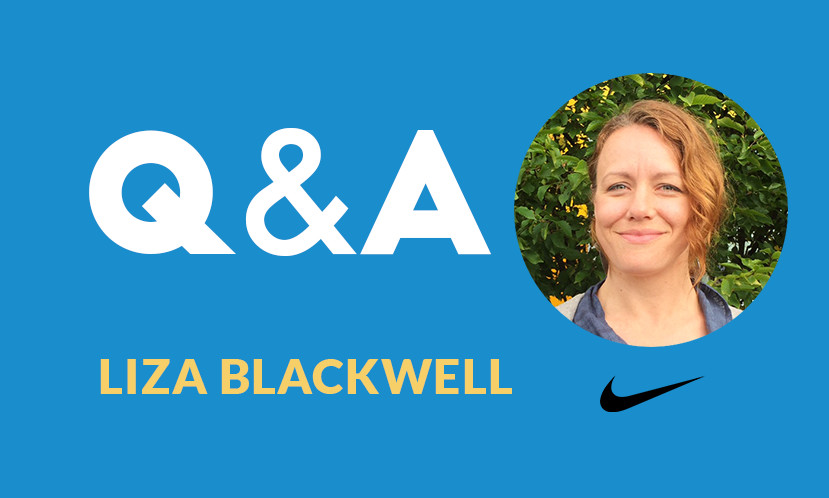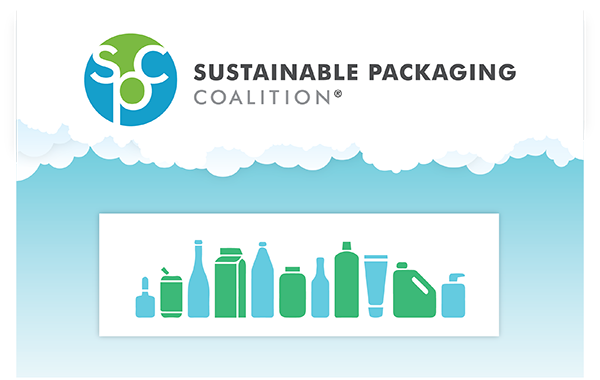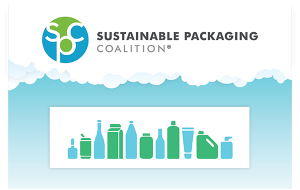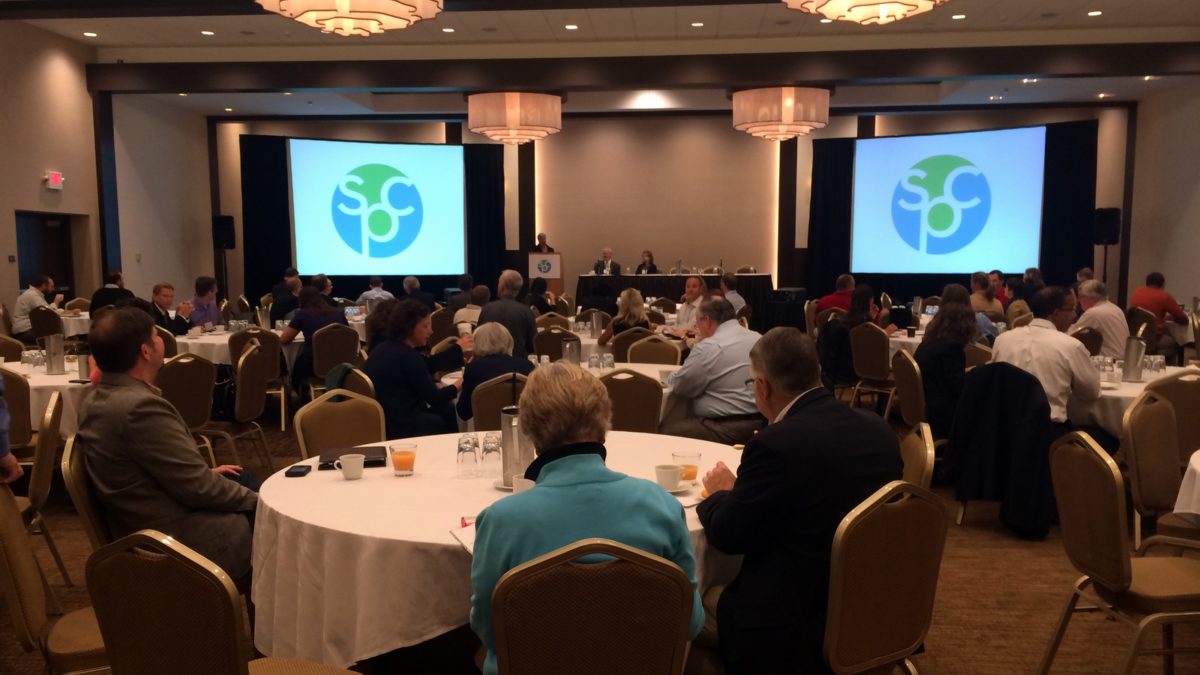The SPC Executive Committee is an Advisory Committee to The Sustainable Packaging Coalition. The EC’s role is to provide advice, act as ambassadors for SPC/GreenBlue, and make recommendations on issues related to the SPC, including its goals, strategies, and projects.
We interviewed our three new Executive Committee members, Liza Blackwell (Nike), Kim Carswell (Target), and Chris Davidson (WestRock) to learn more about them and what they hope to accomplish while serving on the SPC Executive Committee
 EC member name: Liza Blackwell
EC member name: Liza Blackwell
Title: Packaging Sustainability Manager
Company: Nike
Q: What are your hobbies?
I’m an outdoors person, which works out really well in the Pacific Northwest. I really love hiking, snowshoeing, camping, or just generally exploring the coast and canyons of Oregon. It’s a great place to get outside. I also enjoy volunteering with a few area animal rescue organizations. Outside of that, being new to home owning, I can be found, more often than I’d like, being mediocre at home repair.
Q: What are your favorite activities to do in Portland?
Portland is fantastic for its food and beer scene. You can hit a different restaurant every week, and never be disappointed. Additionally, there is no short supply of interesting places for vegetarians, which I appreciate. Portland also has a fantastic theater community. There are a lot of really great shows here done by smaller companies. You can see everything from gripping crime dramas, to outrageous parodies, to emotional coming of age stories, all with an audience of 30 people or less. It’s a fantastic town. It’s something to consider when we are planning for SPC Advance (in Portland, September 19-21, 2016).
Q: Since SPC Advance 2016 is going to be in Portland, what’s the one must-do if you come to Portland and you do nothing else?
Powell’s City of Books would have to top the list. If you do absolutely nothing else, go there. It’s an entire city block, three floors, and is a fantastic experience. If a drink and a movie is more your thing, the quirky and historical McMenamins properties are a-can’t miss. If you can only see one site, the Columbia Gorge would get my vote. The best part is that because Portland is so easy to navigate, you could hit all three in one day and still have time to catch a Timbers soccer match.
Q: Can you tell me a little about your role at Nike?
My title is Packaging Sustainability Manager. The responsibilities sound rather broad, and they are. My role is to review and advise the packaging used for any apparel, footwear, or equipment product. This includes any packaging used in transport, consumer-facing packaging, or packaging in a retail environment. I look for opportunities to make design changes, material-usage changes, or process advances that would reflect our commitment to sustainability. I oversee the content management and vendor compliance of our Packaging Restricted Substance List. This is a document that requires our packaging suppliers to remain compliant with Nike packing standards. I also assist with the strategy and facilitation with packaging waste reduction initiatives.
 Q: Nike was a found member of the SPC in 2004, over 10 years ago. What inspired Nike, and you, to get involved with the SPC?
Q: Nike was a found member of the SPC in 2004, over 10 years ago. What inspired Nike, and you, to get involved with the SPC?
We believe that no single organization can drive the system change we all desire. When we came to this realization more than a decade ago, we sought like-minded companies and people who were committed to the same goal. At the time we helped found the SPC, packaging was our single largest volume waste stream, and so stimulating industry collaboration to reduce waste, was a necessity. It’s still a necessity today but through the SPC we are making significant progress..
On a personal level, I want to be involved because I benefit by having meaningful discussions with others in our industry. And in my role as a Nike employee, I can bring that information and energy back to Nike and incorporate it into our standards and practices. Worldwide, conversations are happening that will affect the future of our planet. I feel we’re at a tipping point in our stewardship of the environment. And there is more urgency than ever for a responsible packaging industry to drive industry change.
Q: Following on to that, how did you first become interested in sustainability?
It goes back to the first question and answer of “what are my hobbies? I like to be outside.” It started for me before the term environmental sustainability was a thing. Professionally, I had been going in the direction of print production and packaging production, and being in packaging production was the first time that I felt like I could make a difference. I could make some choices in my job that directly reflected my personal values. For example, when I started with Nike as a packaging producer, one of the changes I was able to implement was moving all of our golf ball packaging to FSC certified paper. I thought, “This is fantastic. This is possible!” Obviously you’re doing it with support of others. But it was the first time I figured out that one person could actually make a difference. We struggle with that in daily society, where it’s often, “Yeah, I could recycle but really how much is that helping?” In the packaging industry, we know how much it is helping, but your average person, I think, may not understand just how much one person can help. So getting into the packaging industry was a revelation that I can personally make a difference. This is fantastic.
Q: What inspired you to run for the Executive Committee?
It’s important for Nike and me to be engaged with the industry, helping to move some of these important industry discussions forward from the front. An example is the biodegradability additives position paper the SPC just released. It’s a great example of an approach in which I’m really interested. I think it’s really important that the industry is making these larger statements about what works in reality for the environment and what doesn’t to both help inform business and the consumer. The opportunity to lead from the front is something I certainly didn’t want to miss.
Q: You mentioned the position paper on biodegradability additives. What other initiatives within the SPC are you involved with or planning to get involved with, and what would you like to achieve during your time on the EC?
Right now the one I’m most excited about are the SPC meetings, especially SPC Advance 2016 comes back to Portland. I’m certainly planning on being involved in that! I’m also excited about the educational opportunities that the SPC is providing. A big focus for me will be pulling groups into the SPC who are there as members but are not as engaged as they could be, and of course I’ll be focused on new membership. It’s so important that groups like the SPC can act as an industry driver and as a place where we who come from different industries and different brands can make effective decisions. Whether it’s around chemical or material use, or process and design development, we can all learn from each other. The thing I’m most excited about SPC is the chance to bring industry together to make meaningful progress toward our goals..
Specifically, I’d like to take a good look at how SPC members could use packaging as a potential material source, and how we encourage other organizations to – either on their own or through partnerships – to look at packaging as a potential material source. How can we set up processes that can be duplicated across the industry? And how do we grow the SPC. Involvement and collaboration are key to moving the entire industry forward?


 One of the SPC’s core tenets in its approach to making packaging more sustainable is operating with material neutrality. At face value, that means we don’t engage in the paper versus plastic debate. The deeper meaning of our material neutrality, though, is that we never pass judgement on the inherent sustainability of any particular packaging material — good or bad — no matter what type of work we’re engaged in. The SPC is not in the business of advocating the use of one material nor will it ever advise industry to blacklist any particular material. On one hand, material neutrality is a necessary measure to bring diverse stakeholders together and foster an atmosphere of collaboration over competition. On the other hand, material neutrality has become a natural consequence of our objective viewpoint on packaging sustainability. Put simply, we couldn’t pick winners and losers even if we wanted to.
One of the SPC’s core tenets in its approach to making packaging more sustainable is operating with material neutrality. At face value, that means we don’t engage in the paper versus plastic debate. The deeper meaning of our material neutrality, though, is that we never pass judgement on the inherent sustainability of any particular packaging material — good or bad — no matter what type of work we’re engaged in. The SPC is not in the business of advocating the use of one material nor will it ever advise industry to blacklist any particular material. On one hand, material neutrality is a necessary measure to bring diverse stakeholders together and foster an atmosphere of collaboration over competition. On the other hand, material neutrality has become a natural consequence of our objective viewpoint on packaging sustainability. Put simply, we couldn’t pick winners and losers even if we wanted to.

